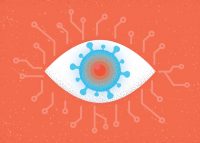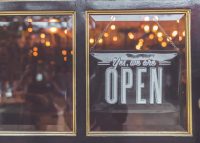We’re living in a reality where people will be returning to their offices long before the coronavirus outbreak is neutralized. This may be beyond a matter of politics. It’s unclear how, if at all, the country’s office-based businesses could remain closed potentially into next year. Remote work has demonstrated its ability to displace many of the tasks done in the workplace, but for many companies it may not be enough, or at least be too soon for a complete remote conversion.
That’s why leaders within both office landlords and office tenants are already looking for ways to keep virus risk down in their spaces. Some of the adaptations are simple and low-tech. One-way hallways, plexiglass dividers and similar physical elements don’t need advanced technology to be effective. Similarly, management choices like reducing desk density or increasing cleaning frequencies are also analog in nature. However, these approaches often leave something to be desired.
Barriers and markers are static unless managers physically move them based on their own direct observations. Whether there are twenty people in the building or 200, they’ll still be just as present as ever. There are no setpoints or optimization with non-moving, physical barriers and markings. They can’t be made more effective based on observations at a particular point in time. They’re either there or they’re not.
In a time when offices are more and more moving towards to an on-demand, activity-based orientation, this approach seems to miss the mark in a lot of ways. It would be better if every occupier in a given space had their own, fully-enclosed and ventilated area to use for work, but that’s not possible in any typical office. Even amongst law firms, known for their large volume of private workspaces, people still need to meet, confer and collaborate.
The solution might take the form of occupancy monitoring technology. This kind of tech is not new but it has not been without its controversy. Sticking cameras in an office is undeniably intrusive. For the providers who go the camera-free route, giving their users sensor medallions that look like chunky necklaces, people still complained about being monitored, listened to or micromanaged.
Read more



Cameras within the office might remain a bit of a pariah but for location-based sensors and occupancy tracking, the outbreak is softening some perspectives. As we discussed in our newest report, focusing on how tech can help put offices back to work, numerous offices are now considering the use of occupancy sensors in their spaces. The life and death exigence of COVID-19 has, unsurprisingly, made people a little more comfortable with greater monitoring in the workplace.
Since occupancy monitoring provides managers with a real time understanding of how many people are in a given space, it has two primary implementations for handling the coronavirus. First, managers can physically go out and tell people to stop congregating in overcrowded areas. They can also install devices to do the work for them.
According to Aleks Strub, chief marketing officer for occupancy sensor provider Density, one of the newest features of the technology comes in the form of installing digital screens outside cafeterias, meeting rooms and other spaces, allowing occupiers to see for themselves how close to an unsafe density a given room is.
But second, and more interestingly, it can serve as a set of eyes and ears for directing other, perhaps simpler adaptations. For some managers, perhaps this means modular, adjustable barriers and dividers that only get set up when occupancy hits a certain level. It could also mean adding or removing seating in certain areas of the building to even out occupancy across rooms to safer levels. Or perhaps it means enhancing the effectiveness of cleaning services. Aleks said that “companies can use our data to determine which spaces have been used more frequently and then deploy deep cleaning efforts to those areas. Usage-based cleaning will help companies streamline resources and avoid wasting time cleaning spaces that have been left vacant.”
The coronavirus outbreak has seen us take a number of adaptive steps of fascinatingly different sophistication. On the one hand, millions and millions of us are using videoconferencing tools, remote desktop applications or even VR to effectively work from our couches and bedrooms. However, we’re also washing our hands until our skin turns raw and cutting up old t-shirts into face masks for trips to the supermarket. This only illustrates that real-life crises take a diverse range of responses to effectively navigate their risks.
Occupancy sensors can serve as the brain of the COVID-19 response operation, helping target cleaning, management attention, or other simple yet effective solutions to where they’re actually needed. Offices need to get back to work, and they’ll likely have to do it before we get an effective vaccine. By using occupancy sensors to guide and tailor their cleaning protocols and other adaptations, office managers can ensure that they’re as prepared as possible for the challenge. [Propmodo]
